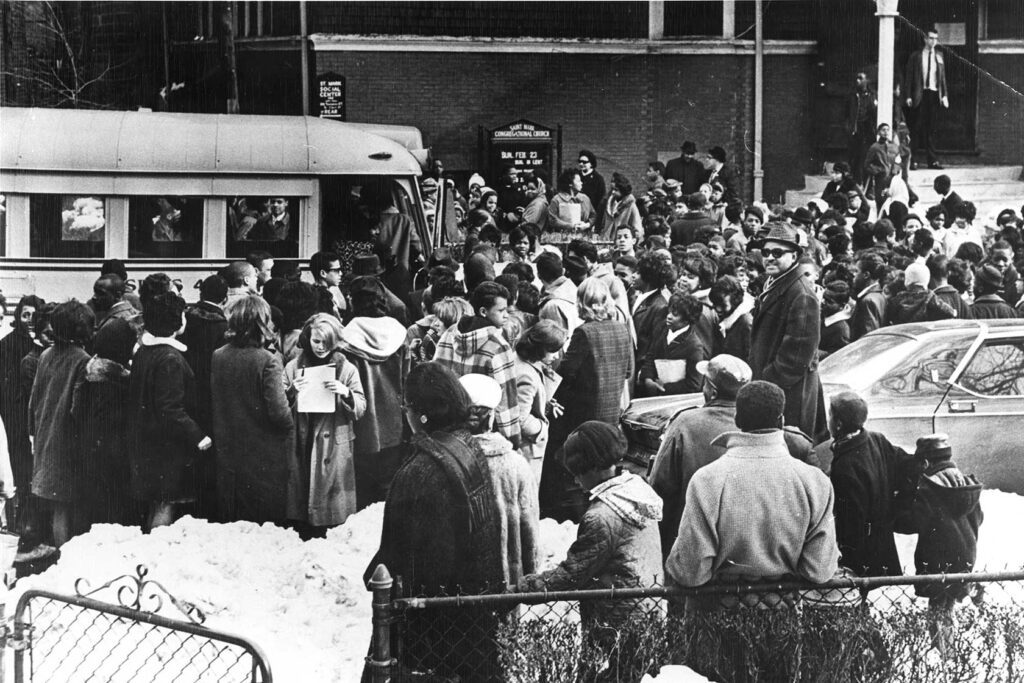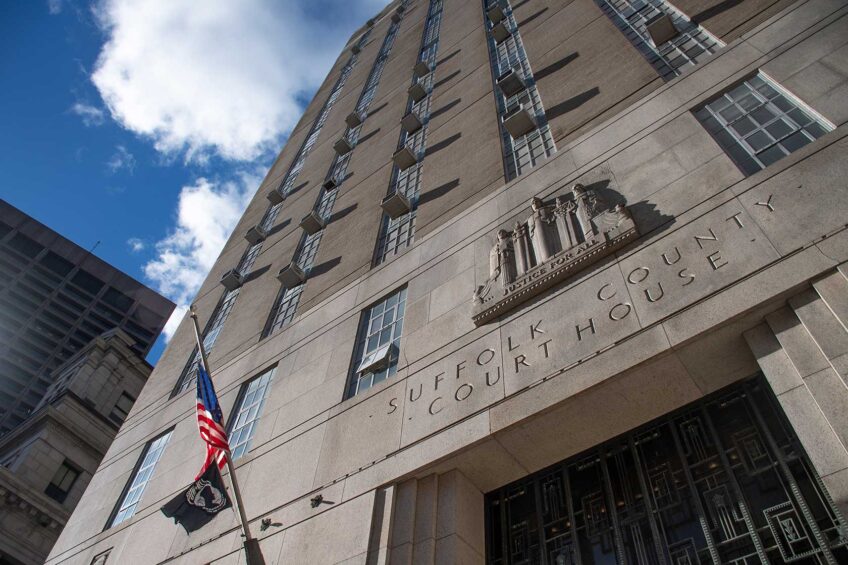
On a frigid morning in 1964, students crowded into the assembly hall at St. Mark’s Social Center in Roxbury. Bundled in winter coats and boots, some students wore excited smiles while others stayed straight-faced, waiting. Outside, school buses carrying suburban students waited among piles of snow.
On Feb. 26, 1964, Black and white children skipped school. They were protesting “de facto” (meaning “not by law”) segregation in Massachusetts schools. Boston’s citywide “Stay Out for Freedom” brought more than 10,000 children to churches and other religious centers, meeting houses and even a YMCA.
Two people were at the forefront of the 1964 school boycott. One was James P. Breeden, a newly ordained Episcopal priest. The other, Noel Day, had been a teacher for the predominantly Black schools in New York’s Harlem neighborhood. The two had met as students at Dartmouth College in the 1950s.
The Boston School Committee, overseeing education in the city, had long denied that schools were segregated. After her election as School Committee chair in 1963, Louise Day Hicks claimed that mostly Black schools resulted from “other forms of discrimination.”
At the time, 20 of the city’s public schools served a majority-Black student body. These schools were “overcrowded, underfunded, riddled with health and safety concerns” and housed in decrepit buildings.
Students spoke of worn furniture and rodents scampering across floors. They also complained about pocketbook searches. Parents had grown concerned about the overall quality of their children’s education. Education activists worried about racist textbooks. The previous year, the Boston Globe reported that only 10% of Boston’s 2,800 public school teachers were Black. This was another concern among those who would eventually gather at St. Mark’s.
But tensions had been growing in the leadup to the protest.
When the School Committee threatened legal action to thwart the protest, boycott leaders reassured their community. When the governor and the mayor and concerned white parents decried the proposed stay-out, boycott leaders stood firm.
On Feb. 10, 1964, Massachusetts Attorney General Edward William Brooke ruled the stay-out “unlawful.” His decision “exploded like a bomb” in the Black community.
For two days, boycott leaders said nothing publicly about Brooke’s decision. On Feb. 12, speaking in a measured, almost rhythmic tone at a press conference, Breeden told reporters that “the moral considerations at issue are far graver than the legal.”
Having sought legal counsel, Breeden and Day decided that, despite the $50 fine they would have to pay should a case be brought against them, the Stay Out For Freedom was worth the risk.
But support for the stay-out action also grew. The Harvard-Radcliffe Young Democrats offered to provide school lunches, and others signed pledges to take responsibility for the protest should legal repercussions arise.
“It looks as if everyone is trying to get into the act,” Hicks said of those backing the movement. “They’re nothing but a bunch of headline-hunters.”
As the boycott gained traction, so too did its opposition. In Roxbury, the epicenter of the planned boycott, The Boston Sunday Herald interviewed six teachers who expressed discontent.
“The teachers are very much hurt at what has been going on … and most of them think the boycott leaders have raised a false issue as a ruse to call attention to the economic problems which do exist,” one said.
Some people declared the proposed stay-out “another encouragement of lawlessness.”
But Breeden told the Boston Herald, “There is no indication of any action by the School Committee that would lead us to call off the boycott.” He and his colleagues continued their work, assigning students to various Freedom Schools that would keep the students occupied.
Despite the threats, the movement forged ahead. And on Feb. 26, Boston Public Schools saw 20,571 absentees — 12,000 more than usual. And more than 10,000 students participated in the Freedom Schools.
The superintendent at the time declared the protest “a victory for no one.” But education activists would continue their fight. Eight years later, Boston’s chapter of the NAACP would file a class-action suit against the Boston School Committee on behalf of 14 black parents and 44 children. A decade after the Stay Out For Freedom, U.S. District Court Judge Wendell Arthur Garrity would order busing of students to end Boston schools’ racial segregation, which he had declared unconstitutional.






